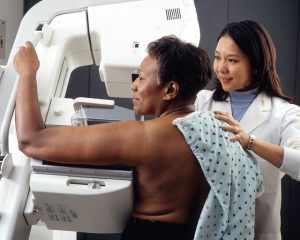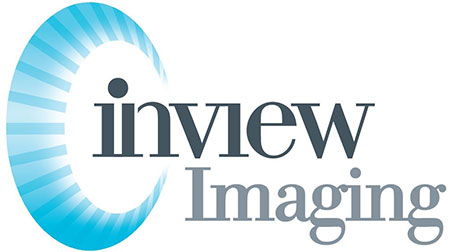-
Things I Wish I Knew Before Mammogram: Vital Insights
Get ready to navigate the world of mammograms like a pro! From preparation tips to what to expect during the procedure, this listicle has got you covered. Discover insights on how to ease discomfort and reduce anxiety, ensuring a smoother experience. Learn about the importance of regular screenings and how they contribute to early detection and treatment.
Stay tuned for reviews of our top picks for comfortable clothing options during your mammogram journey. Scroll down to find out more about what lies ahead!
Key Takeaways

-
Prepare for your mammogram appointment: Arrive early, wear comfortable clothing, and avoid using deodorants or powders.
-
Utilize relaxation techniques for mammogram prep: Deep breathing or visualization can help reduce anxiety during the procedure.
-
Know the different mammogram types: Understand the differences between 2D and 3D mammograms to make informed decisions.
-
Manage discomfort effectively: Communicate any discomfort to the technologist and ask for positioning adjustments.
-
Follow up on results: Stay proactive with follow-up appointments and discussions with your healthcare provider.
-
Early detection saves lives: Regular mammograms increase the chances of detecting breast cancer at an early, treatable stage.
Preparation tips before appointment
Before your mammogram appointment, there are essential steps to take for a smooth experience:
-
Avoid wearing deodorant or lotion on the day of the exam. These products can interfere with imaging quality.
-
Bring any past mammogram records to aid the radiologist in comparing current images with previous results.
-
Opt for a two-piece outfit for convenience during the exam, as you will need to undress from the waist up.
Following these preparation tips can help streamline your mammogram appointment and ensure accurate results. Remember, proper preparation enhances the efficiency of the exam and contributes to its effectiveness.
Being mindful of these details can make a significant difference in the accuracy and comfort of your mammogram experience. Consider these tips as part of your homework before the appointment to make the process smoother and more beneficial for you.
Incorporating these simple yet crucial steps into your pre-appointment routine can lead to a more efficient and productive mammogram session, providing peace of mind regarding your breast health.
Importance of relaxation techniques
Before heading for a mammogram, it’s crucial to emphasize the significance of relaxation techniques. These methods can significantly help in managing stress and discomfort during the procedure.
-
Practice deep breathing exercises: Deep breaths can calm the mind and body, reducing anxiety levels before and during the appointment.
-
Listen to calming music or guided meditations: Engaging with soothing sounds can promote relaxation while waiting for the mammogram, easing any tension or nervousness.
-
Visualize a positive outcome: By envisioning a successful and smooth process, individuals can cultivate a sense of control and inner calmness throughout the experience.
Incorporating these relaxation techniques into your pre-mammogram routine can make a notable difference in how you feel before, during, and after the procedure. It’s essential to prioritize your mental well-being alongside your physical health during this time.
Remember, taking care of your emotional state can enhance the overall mammogram experience, making it more manageable and less stressful. By implementing these simple yet effective strategies, you can navigate through the process with greater ease and comfort.
Understanding different mammogram types
When it comes to mammograms, it’s crucial to understand the differences between traditional 2D and advanced 3D mammograms.
-
Traditional 2D mammography: This is the standard method that takes two X-ray images of each breast. While effective, it may not detect certain abnormalities as clearly as 3D imaging.
-
3D mammography (tomosynthesis): Offers a more detailed view by capturing multiple images from various angles. This results in clearer mammography images, reducing the need for additional tests due to unclear results.
Digital mammography, including 3D technology, provides enhanced image quality and allows radiologists to examine the breast tissue layer by layer. The improved clarity can lead to earlier detection of abnormalities.
Discussing with your healthcare provider is essential to determine which type of mammogram suits your individual needs best. Factors like age, breast density, and personal history can influence this decision.
Managing discomfort during the procedure
When undergoing a mammogram, it’s crucial to address any discomfort experienced during the process. Communicating openly with the technologist about any issues can significantly improve the experience.
To help manage any additional discomfort or pressure felt during the exam, consider utilizing relaxation techniques. Controlled breathing exercises or visualization methods can aid in easing any tension or unease.
Scheduling the appointment strategically can also make a difference in managing discomfort. Opting for a time when breasts are less sensitive, such as after menstruation, can help reduce any discomfort experienced during the imaging process.
Follow-up care after mammogram
After your screening mammogram, it’s crucial to prioritize follow-up care for optimal breast health. Here are some essential steps to consider:
-
Schedule subsequent mammograms promptly: If additional imaging or tests are recommended following your initial screening, make sure to schedule them without delay. Timely follow-up is key in addressing any potential concerns.
-
Monitor changes in breast health: Keep track of any changes you notice in your breasts and report them promptly to your healthcare provider. Early detection plays a vital role in successful treatment outcomes.
-
Maintain regular screening schedules: Follow the screening guidelines recommended by your doctor for ongoing monitoring of your breast health. Regular mammograms are essential for early detection of breast cancer.
Benefits of early detection
Regular mammograms play a crucial role in the early detection of breast cancer, significantly increasing treatment success rates. These screenings can identify abnormalities in the breast tissue that may not be noticeable through physical examination alone.
Early detection through mammograms allows for prompt medical intervention, leading to more effective treatment options and improved outcomes. Research shows that when breast cancer is detected early, the five-year survival rate can be as high as 99% for localized tumors.
Routine mammograms provide individuals with the peace of mind that comes from actively monitoring their breast health. By staying proactive with screenings, individuals can detect any potential issues at an early stage, reducing the risk of complications and ensuring timely access to necessary treatments.
According to the American Cancer Society, women aged 40 and older should undergo annual mammograms to screen for breast cancer. However, it’s essential to consult with healthcare providers to determine the most suitable screening schedule based on individual risk factors and medical history.
In summary, the benefits of early detection through regular mammograms cannot be overstated. By prioritizing routine screenings, individuals can take proactive steps towards maintaining their breast health and increasing the chances of successful treatment outcomes.
Addressing common misconceptions
Mammograms are often surrounded by misconceptions, but it’s essential to dispel the myth that they are always painful. Many women actually find the experience to be quite manageable. Receiving a call back for additional imaging after a mammogram does not automatically indicate cancer. It is often a precautionary measure taken to ensure accurate results.
It’s crucial to read and understand that mammograms are recommended for all women, even those without a family history of breast cancer. Regular screenings can help in early detection, leading to more effective treatment options and higher survival rates. Embracing these routine screenings can significantly impact one’s overall health and well-being.
Despite the anxiety or fear that may arise from scheduling a mammogram, it’s important to mark the date on your calendar and prioritize your health. The procedure itself is relatively quick and can provide valuable insights into your breast health. Remember, knowledge is power, and taking proactive steps towards your well-being is always worth it.
On the day of your mammogram, try to stay relaxed and trust in the process. The discomfort experienced during the procedure is temporary and far outweighed by the potential benefits of early detection. By staying informed and proactive about your breast health, you are taking a significant step towards prioritizing your overall well-being.
Support resources available
When preparing for a mammogram, it’s essential to be aware of the support resources available to help you through the process. Here are some key points to consider:
-
Local support groups: Connect with local support groups specifically for women undergoing mammograms. These groups offer a platform to share experiences, advice, and emotional support during the screening process.
-
Online forums and resources: Explore online forums and websites that focus on breast health and mammograms. These platforms provide valuable information, tips, and emotional support from individuals who have gone through similar experiences.
-
Counseling services: If feelings of anxiety or fear about mammograms arise, consider seeking help from a counselor or therapist. Talking to a professional can provide you with coping strategies and emotional support to navigate any concerns you may have.
Impact of family history on screenings
Family history plays a crucial role in determining the need for earlier or more frequent screenings for breast cancer. Individuals with close relatives who have had breast cancer are at a higher risk themselves. Therefore, it is essential to be proactive in monitoring and managing this risk.
Genetic counseling is vital for individuals with a strong family history of breast cancer. Through genetic counseling, individuals can gain a better understanding of their personal risk factors based on their family history and genetic makeup. This information can help tailor screening recommendations and preventive measures accordingly.
Having open conversations with family members about their breast health history is key to making informed decisions about screenings. By discussing family health experiences, individuals can gain insights into potential hereditary risks and take proactive steps to manage them effectively.
Regular screenings, such as mammograms, are crucial for early detection of breast cancer, especially for individuals with a family history of the disease. Early detection significantly improves treatment outcomes and survival rates. Therefore, staying vigilant and adhering to recommended screening guidelines can make a significant difference in managing breast cancer risks associated with family history.
Communication with healthcare provider
When scheduling your mammogram at the imaging center, consider preparing a list of questions to discuss with your doctor. This proactive approach can help you understand the procedure better and alleviate any concerns you may have. Callback procedures are common in mammography, so inquire about the process and what it entails during your discussion.
During your appointment, make sure to communicate any symptoms or worries with your healthcare provider. This open dialogue ensures that they have all the necessary information to provide you with personalized care and advice based on your individual situation.
After the mammogram, it is crucial to establish a clear understanding of the next steps. Inquire about the expected timeline for receiving your results and what actions you need to take based on the outcome. Knowing what to expect post-mammogram can help ease any anxiety and ensure that you are prepared for any scenario.
Closing Thoughts
Incorporating these insights into your mammogram journey can ease anxieties, enhance preparedness, and empower you to take charge of your health. Remember, preparation is key, and relaxation techniques can make a significant difference in your experience. Understanding the procedure types, managing discomfort, and following up diligently are crucial steps in your preventive care routine. Addressing misconceptions, utilizing available support resources, and considering family history all play vital roles in your screening process. Effective communication with your healthcare provider ensures personalized care and guidance throughout. Embracing these aspects not only fosters a proactive approach to your well-being but also contributes to early detection and better health outcomes.
Take proactive steps today by incorporating these strategies into your mammogram journey for a smoother, more informed experience that prioritizes your health and well-being.
Frequently Asked Questions
What are some preparation tips before a mammogram appointment?
Prior to your mammogram, avoid using deodorant, powders, or lotions on your chest area. Wear a two-piece outfit for convenience during the procedure and be prepared to discuss any breast changes with the technologist.
Why is it important to use relaxation techniques before a screening mammogram?
Relaxation techniques can help reduce anxiety and muscle tension, making the procedure more comfortable. Deep breathing exercises or visualization can calm nerves and improve the overall experience.
How can one manage discomfort during a mammogram?
Communicate any discomfort to the technologist who can adjust positioning or compression. Relaxing your muscles and taking slow, deep breaths can also help alleviate discomfort during the brief procedure.
What are the benefits of early detection through mammograms?
Early detection of breast cancer through mammograms increases treatment options, improves survival rates, and reduces the need for aggressive treatments. Regular screenings can detect abnormalities before symptoms appear, leading to better outcomes.
How does family history impact mammogram screenings?
A family history of breast cancer may indicate a higher risk, warranting earlier or more frequent screenings. Inform your healthcare provider about any family history of breast cancer to determine the most appropriate screening schedule for you.


